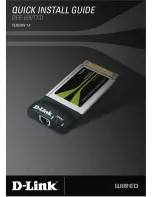
Rittal Liquid Cooling Package
7
2 Safety instructions
2
The electrical equipment protection devices must be
– adequate and useful for the intended use;
– placed correctly;
– easily identifiable which part(s) or circuit(s) of the
equipment is (are) affected (e.g. where necessary, with
durable marking).
Appropriate means must be provided to prevent unin-
tentional and/or erroneous closure of such devices from
the control unit or from other locations.
As a general requirement, please observe the following
five safety rules to DIN EN 50110-1 (VDE 0105-1) when
working in and on the LCP DX, in order to avoid acci-
dents:
1. Switch off!
Switch off the LCP DX at the master switch.
2. Prevent reactivation!
3. Ensure that all poles are de-energised!
4. Earth and short-circuit!
5. Cover or shield adjacent, live parts
2.2
Service and technical staff
The installation, commissioning, maintenance and repair
of this unit may only be carried out by trained, qualified
mechanical and electro-technical personnel.
Only properly instructed personnel may service a unit
while in operation.
2.2.1
Personal safety equipment
Personal safety equipment is to be worn during any
work on this unit when personnel might come into con-
tact with refrigerant and in general for all maintenance
work (see section 16.1 "Coolant information"). As a min-
imum requirement, personal safety equipment is com-
prised of the following components:
– thermally insulated gloves
– protective goggles
– in the event of fire, airtight respiratory masks must be
worn.
2.3
Operator requirements
In accordance with EU Regulation 517/2014, the oper-
ator must carry out a leak test of the coolant circuit using
a suitable test device at least once a year. Any leaks that
are detected must be repaired immediately.
2.3.1
Abbreviated instructions
The operator must ensure that abbreviated instructions
containing the following information are available in a
readily accessible location on the LCP DX.
1. Name, address and telephone number of the instal-
lation company, its customer service department, or
the customer service department of the owner/op-
erator, or as a minimum requirement, the individual
responsible for the cooling system, together with the
address and telephone number of the fire brigade,
police, hospitals and burn victims centres.
2. Type of refrigerant: R410A, comprising 50% di-
fluormethane R32 (CH
2
F
2
) and 50% R125 pen-
tafluoroethane (C
2
HF
5
);
3. Instructions for switching off the cooling system in
an emergency (see section 7.2.3 "Switching off in an
emergency");
4. The maximum permissible pressures (see
section 11 "Technical specifications").
2.3.2
System log
Under DIN EN 378, the operator is required to keep a
system log and ensure that it is regularly updated. The
system log should contain the following information:
1. Details of all repair work
2. Quantity and type (new, reused or recycled) of refrig-
erant added, quantity of refrigerant removed
3. Outcome of any analysis of reused refrigerant, if
available
Caution! Risk of malfunction or damage!
Proper and flawless unit operation can
only be ensured when it is operated un-
der the intended ambient conditions. As
far as possible, observe the ambient
conditions for which the unit was de-
signed, e.g. temperature, humidity, air
purity.
Caution! Risk of malfunction or damage!
All media required for the control sys-
tem, such as the correct fill volume of
coolant, must be available throughout
the entire operating period of the device.
Caution! Risk of malfunction or damage!
Installation, and in particular the coolant
line pipework between the external con-
denser and the LCP DX, must only be
carried out by trained, qualified and ac-
credited cooling system specialists.
Caution! Risk of malfunction or damage!
In order to prevent EMC-related mal-
functions during operation, and to allow
access for servicing purposes, cross-
wiring through the LCP DX to the bayed
racks is prohibited.
Note:
Rittal offers leak testing of the device as a
service.








































